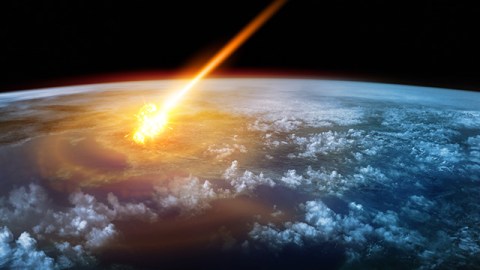The End of the World: A User’s Manual

The end of the world has been coming for quite some time. As Reza Aslan points out in Zealot, Jesus Christ was not the only End Times preacher with stock in this idea—it was a common pronouncement aimed at wicked politicians and moneymen in those centuries, alongside the lucrative career of healer.
As early as 634 BCE Romans invented the random arithmetic of twelve eagles representing ten years apiece, implying that Rome—the world—would end 120 years after its founding. Nearly 300 years later Hilary of Poitiers announced that was the last year the world would exist to great fanfare. The United Society of Believer’s in Christ’s Second Appearing guessed 1792 was the year; they guessed again in 1794. They might still be guessing.
Today there is no dearth of doomsday sayers or professional healers. The 2012 movement switched gears from apocalyptic catastrophe to ‘rebirth of the healing age’ about two years prior, while Latter-Day Saints president Warren Jeffs also missed the mark twice from his jail cell, blaming the first one on the ‘lack of faith’ of his followers.
We have plenty of upcoming predictions: psychic Jeane Dixon predicted 1962 before understanding her error, throwing out the year 2020 before her death. Geoscientist James Kasting gives us until 500,000,000 when a drop in carbon dioxide makes this planet uninhabitable. But that’s bringing science into it, so let’s stop. I’ll take the 32 years left until Ray Kurzweil’s Technological Singularity, which isn’t an ending, per se, but the year humans and machines become One.
Many of today’s End of the World claims come not from religionists—though there are plenty of them—but the environmental movement. I cannot disagree with the urgent claims being put forward by opponents of the Keystone pipeline or those warning of the dangers of factory farming, on our lands and in our intestines. Yet the Earth’s demise still remains a bit farcical to me; as George Carlin noted, when it’s done with us, it will shake us off like ‘pesky fleas.’
But for those of us who really do want the end to come, I suggest reading Sam Hughes’ excellent essay, ‘How to destroy the Earth.’ As he notes in the introduction,
The Earth is built to last. It is a 4,550,000,000-year-old, 5,973,600,000,000,000,000,000-tonne ball of iron. It has taken more devastating asteroid hits in its lifetime than you’ve had hot dinners, and lo, it still orbits merrily. So my first piece of advice to you, dear would-be Earth-destroyer, is: do NOT think this will be easy.
Ernest Becker would have filed the ‘End of the World’ phenomena into our persistent denial of death folder. Even today’s environmental catastrophes, coupled with our terrible dietary habits, point to an ending of us—and, unfortunately, any number of species we’ll take down on our way out. Even so, this possibility is most likely quite a ways off. As ignorant about our surroundings as we tend to be, we’re also resilient creatures. We’ve been at this evolving thing for quite some time.
But for those hard-headed Last Judgment types, Hughes offers plenty of chances for your dreams to come true. He lists the following opportunities for the ambitious:
—Annihilated by an equivalent quantity of antimatter. This might be the most simple. All you need to do is create an equivalent amount of energy that the sun emits in 89 million years. You’ll also need to do this operation in space; fortunately for you, this will soon not be a problem.
—Fissioned. Take every single atom on earth and split each down to hydrogen and helium. Voila! You’ll also need a sharp pair of scissors.
—Sucked in a microscopic black hole. Gather up enough neutronium to blanket Mount Everest and off we go.
—Cooked in a solar oven. Grab your butterfly net and snag enough asteroids to create two trillion square kilometers of mirror, and you’ll put Snow White right to sleep.
—Overspun. Dreidel the earth. Really, really quickly.
—Blown up. All the nuclear and non-nuclear bombs ever created, detonated simultaneously. Easy like Sunday morning.
—Sucked into a giant black hole. The closest black hole to Earth is 1,600 light years away. If you’ve got Triple A and tip the tow truck driver really well, we have a shot.
—Meticulously and systematically deconstructed. Not for the faint of heart. You’ll need a mass driver and 189 million years of your time. Patience is a necessity.
—Pulverized by impact with blunt instrument. A 5,000,000,000,000-ton asteroid moving at 90% of light speed will do the trick. Slingshot optional.
—Hurled into the sun. Icarus would be proud.
—Ripped apart by tidal forces. You’re still going to have to get us closer to the sun, which takes quite a bit of hauling. Get into Crossfit now.
With a little bit of time and finesse and a ton of impossible resources, you’re now ready to fulfill that prophecy you’ve been waiting for. Best of luck on your endeavor!
Image: solarseven/shutterstock.com





